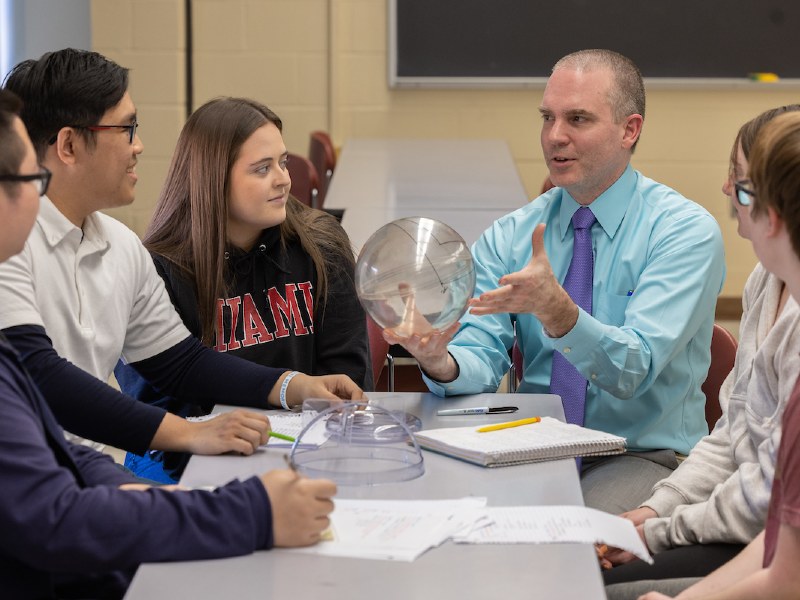Wayne Nirode
My Approach to Teaching and Learning
The teacher-scholar model has always been at the core of my professional identity, even before I knew there was a term to describe it. Prior to coming to Miami University in 2017, I taught mathematics, statistics, and economics for 20 years at Troy High School in Troy, Ohio. After teaching a course multiple times, I can usually tell what concepts are difficult for students. For example, writing proofs is notoriously difficult for high school geometry students. To help support as well as extend student learning, I sought out instructional practices from professional journals, conferences, and innovative curricular materials that I could implement in my teaching. Eventually, I began to create and revise my own materials to use with my students that developed mathematics conceptually by building on students’ prior knowledge and incorporating technology to give students opportunities to engage with the mathematics. Also, while a high school teacher, I completed my Ph.D. in mathematics education and thus was able to incorporate my research and the research of others into my teaching. At Miami, I mainly teach math content courses for students who want to become teachers. My students are beginning to inhabit a world I have been in my whole career — learning mathematics but also thinking about how to teach mathematics. As a teacher-scholar, my research informs the design of instructional activities that provide Miami students opportunities to not only reflect on their learning but also how these activities can support their future students in learning and engaging with mathematics.
My Teacher-Scholar Journey
Two pedagogical design principles are at the heart of my teaching and research. First, I use instructional materials that incorporate scaffolding to support student learning. Second, I leverage mathematical action technologies to engage students in mathematics that they can actively explore, discuss, and make sense of with each other. With respect to mathematics content, the teaching and learning of geometry is the primary area of my teaching and research. Within geometry, I focus on proof and Dynamic Geometry Software. Because of teaching content courses for teachers, my teaching and research embody the teacher-scholar model by having a cyclic relationship where one informs the other. For example, from my research on and development of curricular materials for proof in high school geometry, I have been able to identify prerequisite knowledge that students need prior to proof. This research has led to creating materials that I use in our geometry course for preservice K-5 teachers. Implementing these materials has led to further research analyzing student reasoning at the intersection of conditional statements and geometric diagrams. I also have implemented teaching-research cycles in our problem solving with technology course for secondary mathematics education majors. I use instructional activities that are the culmination of prior research and my experience as a high school teacher. In this course, I also conduct research focusing on teachers’ curricular reasoning concerning the types of technological tasks they are most likely to implement with their students.
Knowledge is Power
“When I began thinking about leaving high school for the next phase of my professional career, it was important for me to go to a university that valued both teaching and research. To me, this is at the heart of the teacher-scholar model. After being at Miami University for six years, I do not think that I could have found a university that better aligns with my views on teaching and researching — in short the teacher-scholar model. I am proud to say that Miami is my professional home.”
Education
Ph.D. Ohio University
M.S. Shawnee State University
M.S. University of Dayton
B.S. University of Dayton
More About Me
After teaching for 20 years at Troy High School in Troy, Ohio, I came to Miami University in 2017. I currently teach mathematics courses for preservice and in-service teachers. My teaching and research is concerned with supporting K–12 mathematics teachers and understanding the context in which they work.
